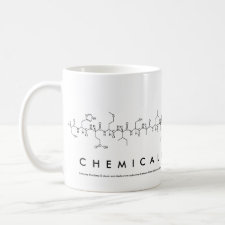
Authors: Zhou WH, Tang SF, Yao QH, Chen FR, Yang HH, Wang XR
Article Title: A quartz crystal microbalance sensor based on mussel-inspired molecularly imprinted polymer.
Publication date: 2010
Journal: Biosensors and Bioelectronics
Volume: 26
Issue: (2)
Page numbers: 585-589.
DOI: 10.1016/j.bios.2010.07.024
Abstract: In this work, we describe a simple, inexpensive and fast method for the generation of molecularly imprinted polymer (MIP) film on quartz crystal microbalance (QCM) crystals using mussel-inspired polymer. Commonly known as a neurotransmitter, dopamine is also a small-molecule mimic of the adhesive proteins of mussels. Polymerization of dopamine in the presence of template molecule (1,3,5-pentanetricarboxylic acid, an analogue of domoic acid, in this case) could produce an adherent molecularly imprinted polydopamine film coating on QCM crystals. Advantages, such as high hydrophilicity, high biocompatibility and controllable thickness, make this molecularly imprinted polydopamine film an attractive recognition element for sensors. Selective rebinding of domoic acid on mussel-inspired molecularly imprinted polymer (m-MIP) coated crystal was observed as a frequency shift quantified by piezoelectric microgravimetry with the QCM system. The decreasing frequency shows a good linear relationship with the concentration of domoic acid. The quantitation limit of domoic acid was 5 ppb with the linear range of 0-100 ppb. The QCM sensor has high selectivity and was able to distinguish domoic acid from its analogous p-phthalic acid and o-phthalic acid owing to the molecular imprinting effect. In addition, the practical analytical performance of the sensor was examined by evaluating the detection of domoic acid in mussel extracts with satisfactory results. It is envisaged that m-MIP could be suitable as recognition element for sensors and the proposed m-MIP QCM sensor could be employed to detect analyte of interest in complex matrices
Template and target information: 1,3,5-pentanetricarboxylic acid, domoic acid
Author keywords: Molecular imprinting polymers (MIP), quartz crystal microbalance (QCM), Domoic acid, Mussel, sensor



Join the Society for Molecular Imprinting

New items RSS feed
Sign-up for e-mail updates:
Choose between receiving an occasional newsletter or more frequent e-mail alerts.
Click here to go to the sign-up page.
Is your name elemental or peptidic? Enter your name and find out by clicking either of the buttons below!
Other products you may like:
 MIPdatabase
MIPdatabase









